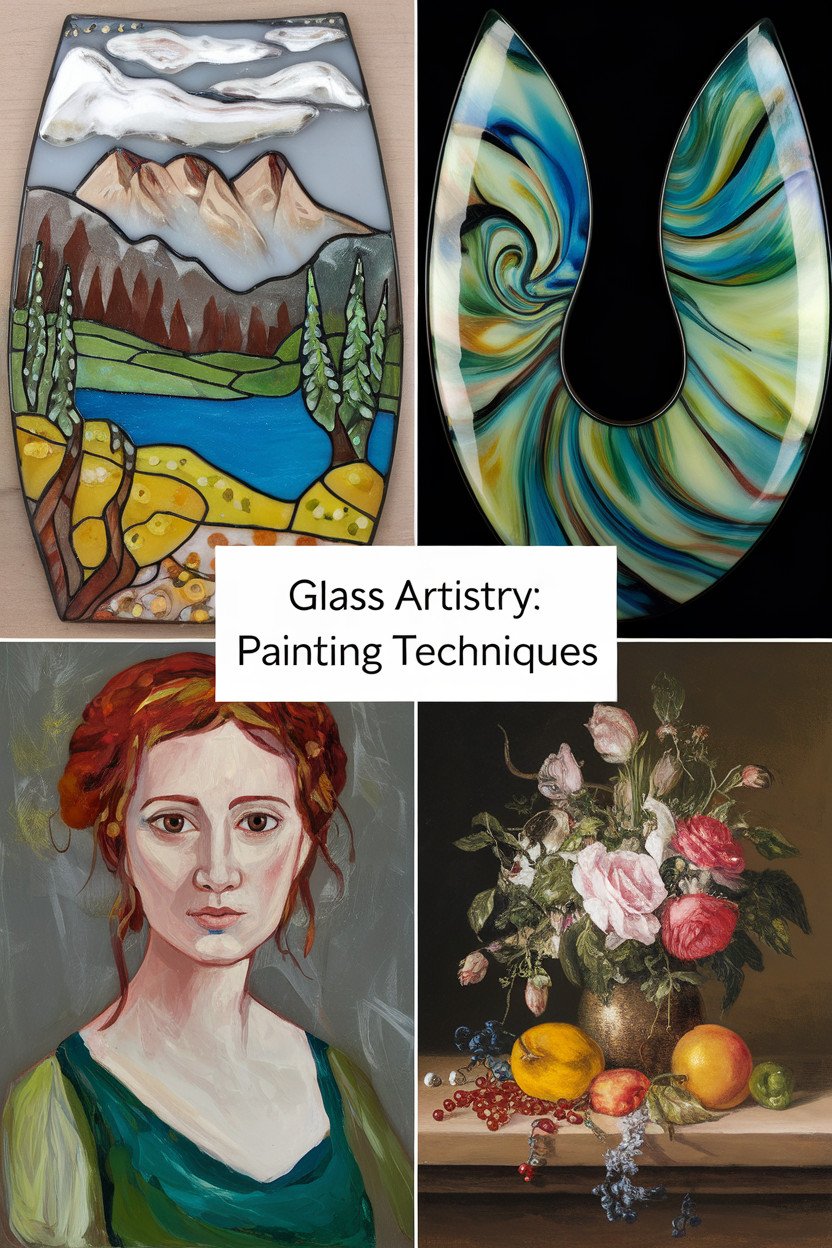Welcome to the world of glass painting mastery, where you can turn ordinary glass into extraordinary works of art.
Whether you’re a beginner or an advanced artist, this article will provide you with the techniques and knowledge to unlock your creativity and take your glass painting skills to the next level.
- Mastering glass painting takes time and practice but can be a rewarding and beautiful craft.
- There are various techniques to explore, from basic brushwork to advanced layering and shading.
- The right supplies are crucial for achieving optimal results.
- Don’t be afraid to tap into your creative side and experiment with different glass painting ideas.
- Proper sealing and curing techniques and preserving your artwork are essential for its longevity.
Getting Started with Glass Painting
If you’re new to the world of glass painting, don’t worry! This section will provide you with all the basics you need to get started on your creative journey. Here are some tips and tutorials to help you on your way:
- To start, you’ll need some basic supplies, like glass paint, brushes, and a clean surface to paint on. You can also experiment with different types of glass, like clear or frosted, to achieve different effects.
- Next, choose a design that inspires you to get started. It can be something simple, like a geometric pattern or a flower, or something more complex, like a landscape or a portrait.
- When you’re ready, follow step-by-step tutorials to learn basic techniques such as outlining, filling in shapes, and blending colors together. Be patient with yourself and don’t be afraid to make mistakes. Remember, practice makes perfect!
- Once you’ve got the hang of the basics, you can start experimenting with more advanced techniques, like layering and shading, to create more intricate and detailed designs.
Before diving into glass painting, it’s important to have the right supplies.
- Glass paint – Choose from a variety of colors and finishes, including matte, glossy, and frosted.
- Paintbrushes – Select brushes of different sizes and shapes to achieve a range of strokes and effects.
- Palette – A palette is necessary for mixing and blending colors.
- Pipettes – These small plastic droppers are useful for precisely adding paint to small spaces.
- Cotton swabs and rags – These are helpful for cleaning up mistakes and excess paint.
- Painter’s tape – Use this to create clean lines and protect areas of the glass you don’t want to paint.
- Glass cleaner – Always clean your glass thoroughly before painting to ensure proper adhesion.

Unleashing Your Creativity
Now that you have learned the basics of glass painting, it’s time to let your creativity shine through. Here are some glass painting ideas to inspire you:
- Create a colorful abstract design using bold brush strokes.
- Paint delicate flowers on a vase or glass candle holder.
- Use stencils to create intricate patterns on a glass frame or mirror.
- Paint a scene from nature, such as a sunset or a beach landscape.
- Personalize a glass ornament or wine glass with a monogram or favorite quote.
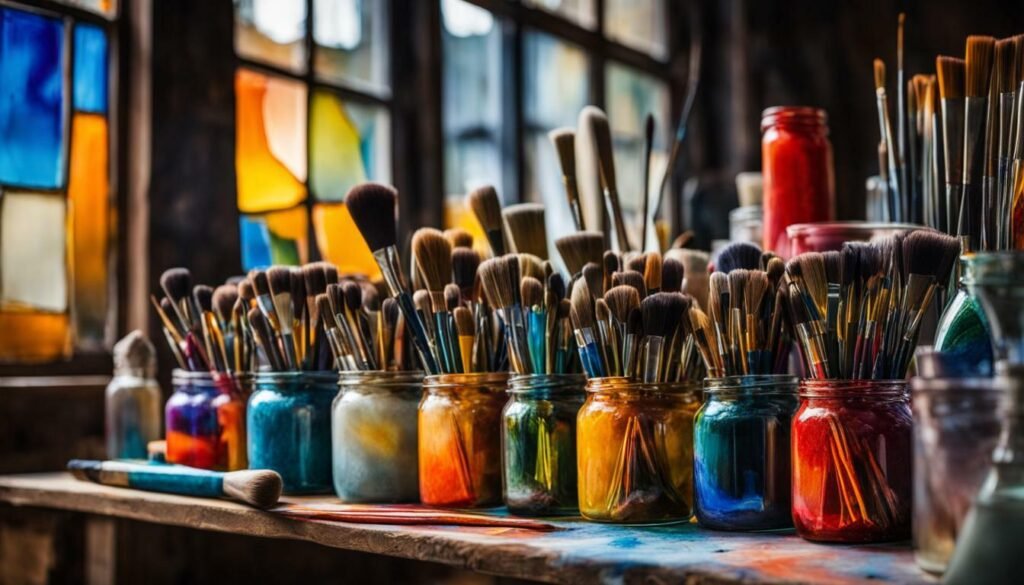
Mastering Techniques for Advanced Glass Painting
These advanced techniques will help you create intricate designs and elevate your artistry:
- Layering: Build depth and dimension by layering different colors and shades on top of each other.
- Shading: Use shading techniques to create highlights and shadows, giving your art a three-dimensional effect.
- Creating Intricate Designs: Experiment with different brush strokes and techniques to create intricate designs and patterns on your glass surfaces.

Perfecting Your Brushwork
The brush is the most essential tool in glass painting. Whether you’re a beginner or an advanced artist, perfecting your brushwork is crucial to achieving smooth strokes, clean lines, and a flawless finish.
- Invest in high-quality brushes, specifically designed for glass painting, for maximum control and precision.
- Practice your strokes on a spare piece of glass before starting on your actual project to get a feel for the brush and paint.
- Use light pressure and short, controlled strokes to avoid smudging or streaking the paint.
- Clean your brush regularly with a soft cloth or paper towel to prevent paint buildup and maintain its shape.
- Experiment with different brush shapes and sizes to create different effects in your artwork.
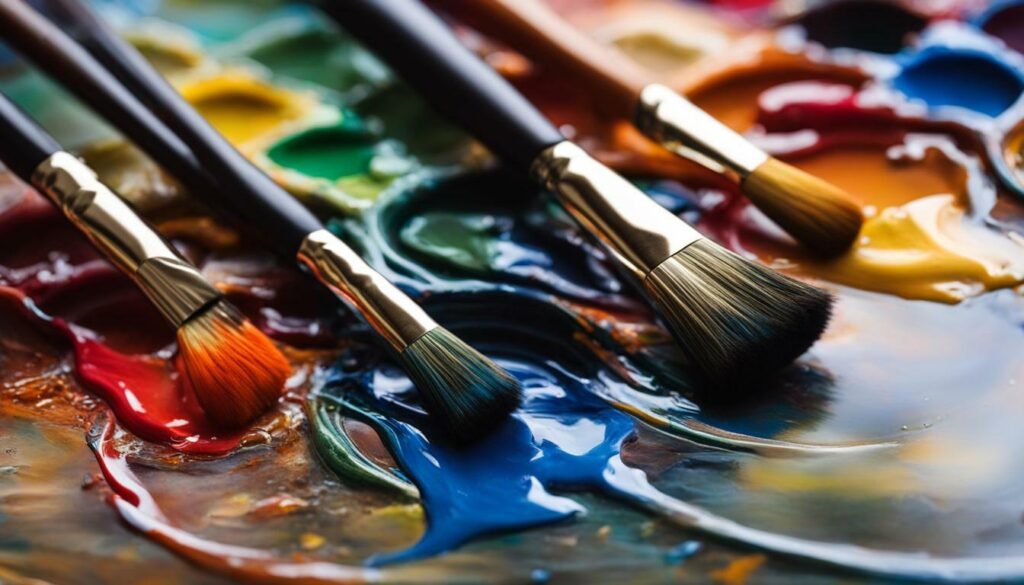
Texture and depth are essential elements in creating stunning glass art. Here are some techniques to achieve them:
- Sandblasting: This technique involves blasting glass surfaces with sand or other abrasives to create a fine texture.
- Etching Cream: Etching cream is a chemical that can create a frosted texture on the glass.
- Stippling: Stippling involves dabbing the paint onto the glass to create a textured effect.
- Shading: Adding darker shades to certain areas and lighter shades to others can create the illusion of depth within the artwork.

Not all glass surfaces are created equal, and it’s essential to select the right paint and techniques to achieve the best results. Here are some tips for working with different glass surfaces:
- If you’re working with smooth glass surfaces, ensure that they are clean and free of any oils or residue before painting.
- For textured surfaces, experiment with different brush strokes and techniques to enhance the texture and create interesting effects.
- Frosted glass surfaces require a slightly different approach. Consider incorporating opaque paints or using a dry brush technique to create a more delicate and subtle effect.
- Remember that glass pieces come in various shapes and sizes, so adjust your approach accordingly. Smaller pieces may require more precision, while larger pieces allow for more freedom.
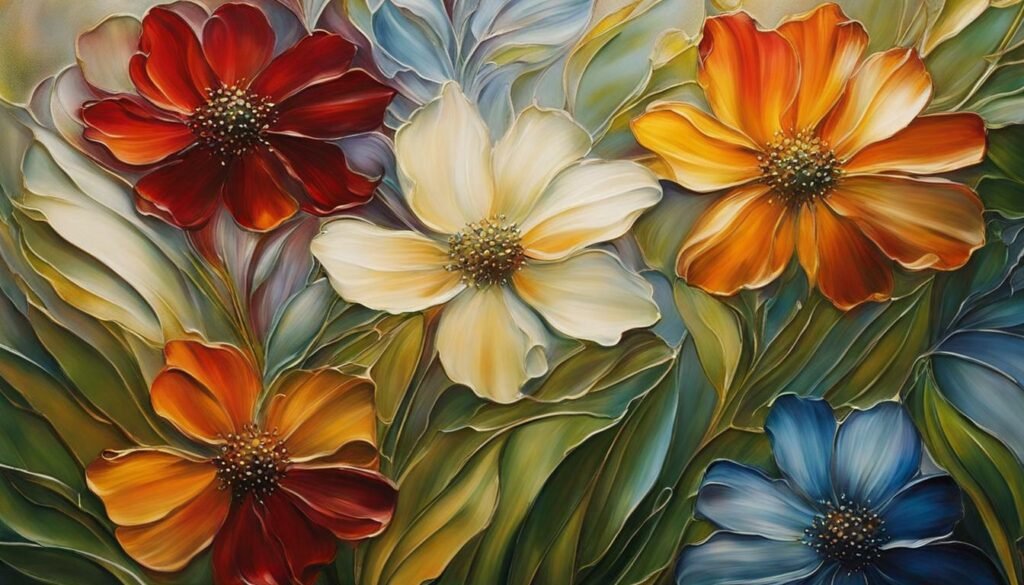
Here are a few techniques to try:
- Create a gradient effect by blending two or more colors of glass stains on a flat surface
- Use a fine-tip brush to paint intricate patterns or designs, such as flowers or swirls
- Experiment with different types of glass stains, such as translucent or opaque, to achieve varying effects
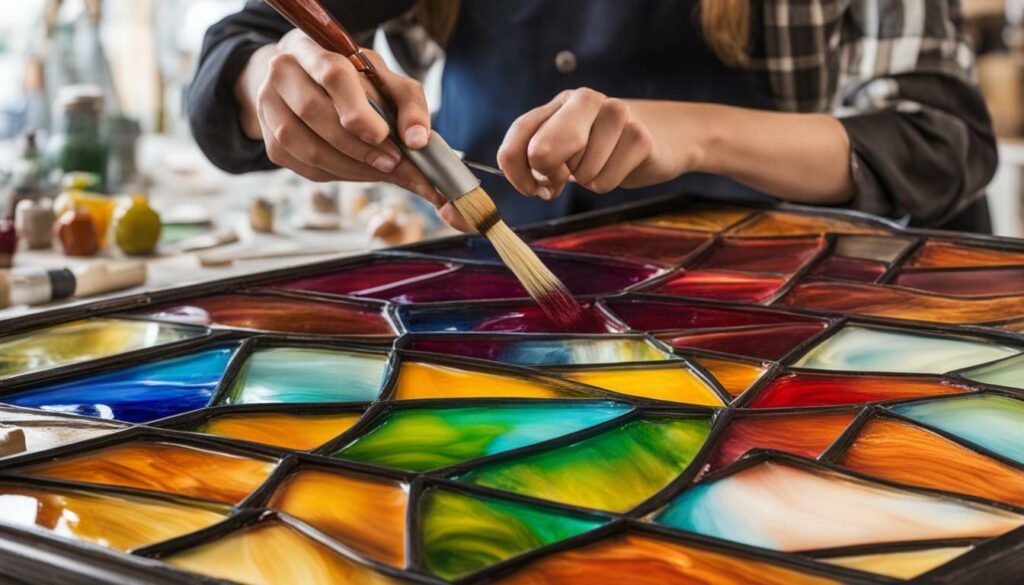
As with any art form, glass painting can present its own set of challenges. Here are some tips to troubleshoot common issues:
- Peeling paint: This can happen when the surface wasn’t cleaned well before painting. Sand the surface lightly, clean it thoroughly, and repaint.
- Smudging: This can occur if the paint is still wet when you touch the glass. Wait for the paint to dry completely before handling the glass.
- Uneven application: This can be caused by using too much or too little paint. Use a small amount of paint and build up the layers gradually for even coverage.
- Bubbles: This can happen if you shake the paint bottle too much or apply too much pressure when painting. Mix the paint gently and use light pressure when painting.
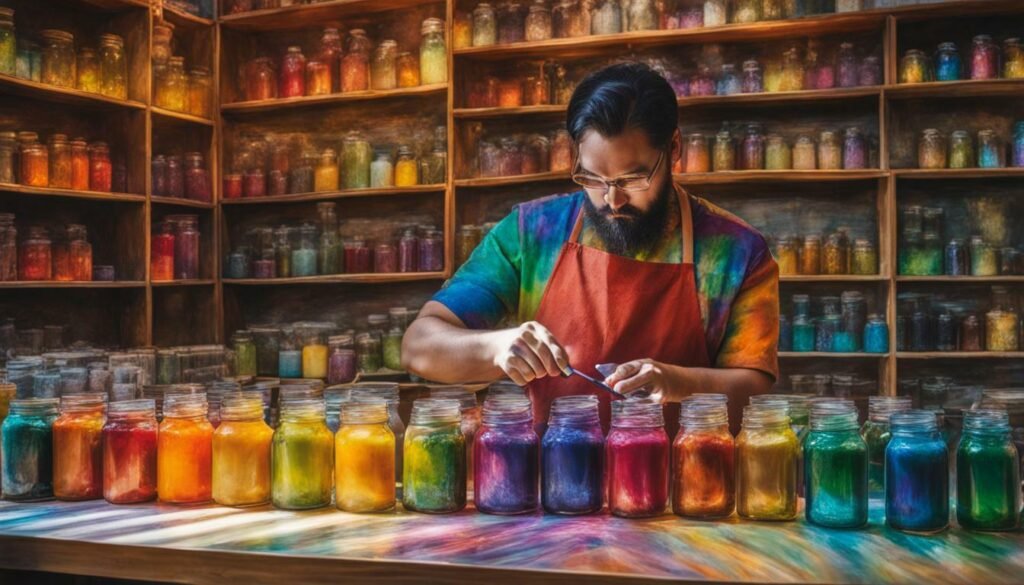
After spending time and effort on creating beautiful glass paintings, it’s essential to properly showcase and preserve them. Here are some tips:
- Consider framing your glass paintings to protect them from dust and damage. Choose a frame that complements your artwork and enhances its beauty.
- Mounting your glass paintings onto a backing board can also protect them and make them easier to display.
- When handling your artwork, always wear clean gloves to avoid leaving fingerprints on the glass surface.
- Store your glass paintings in a cool, dry place away from direct sunlight and moisture to prevent fading and discoloration.
- To clean your glass paintings, use a soft, lint-free cloth and avoid harsh chemicals or abrasive materials that can scratch the surface.
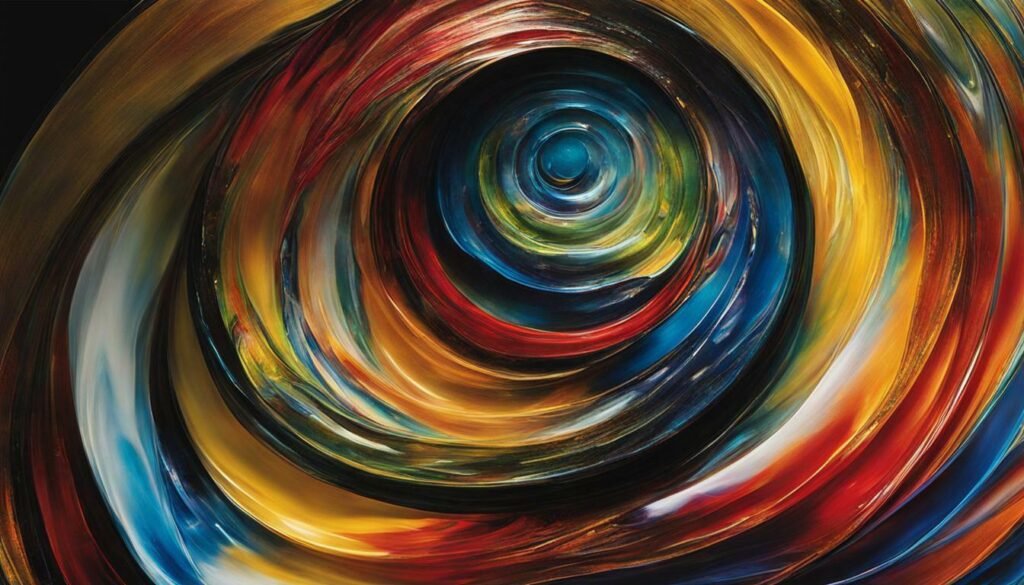
Inspiring Glass Painting Masters
- Judith Schaechter: Known for her intricate and hauntingly beautiful stained-glass artworks, Judith Schaechter’s pieces have been hailed as “some of the most remarkably eloquent and challenging stained-glass works created anywhere in the world in the past quarter-century.”
- Emma Butler: Emma Butler creates stunning and colorful glass paintings inspired by the beauty of nature. Her pieces often feature bold floral designs and intricate patterns, bringing a touch of vibrancy and life to any space.
- Kathy Jordan: As an experienced glass-painting instructor, Kathy Jordan is known for her ability to help beginners master the craft. Her classes offer a wealth of knowledge and tips on techniques, materials, and more, making her a go-to resource for anyone looking to improve their skills.
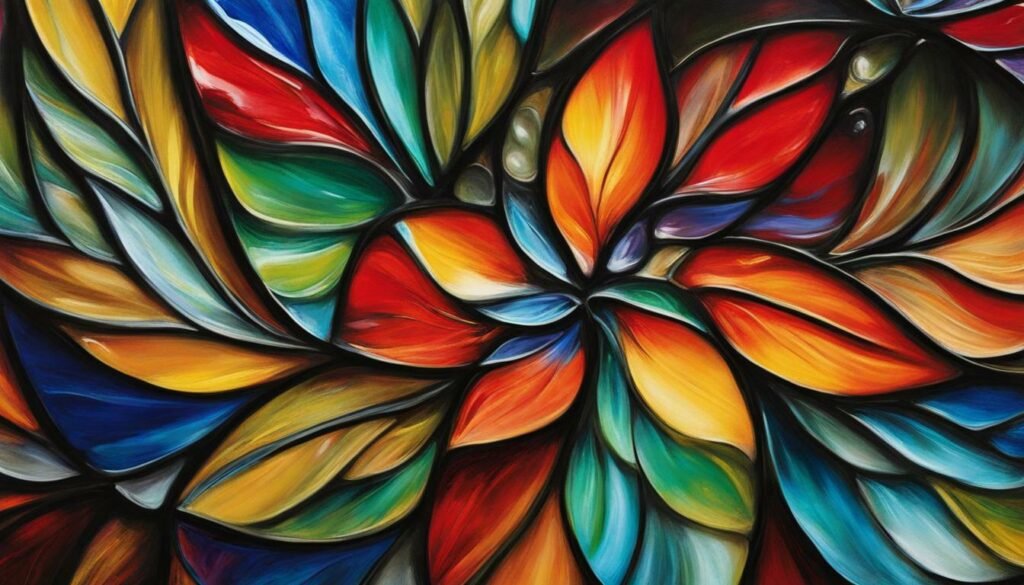
FAQs
Can I use any type of glass for painting?
While glass painting can be done on various types of glass surfaces, it is important to choose the right kind of glass, such as smooth, textured, or frosted, depending on the effect you want to achieve.
Are there any safety precautions I should take while glass painting?
Yes, it is important to wear protective gloves and work in a well-ventilated area when using glass paints and other chemicals. Always read and follow the instructions provided by the manufacturers.
Can I wash glass-painted items?
Yes, glass-painted items can be washed gently using a mild soap and water. However, it is important to avoid scrubbing the painted surface too vigorously to prevent any damage.
How can I seal and protect my glass paintings?
There are various methods to seal and protect glass paintings, such as using a clear varnish or resin.
How can I fix mistakes or remove paint from glass?
If you make a mistake or want to remove paint from glass, you can use a glass cleaner or rubbing alcohol to gently wipe away the paint. Be cautious not to scratch the glass surface.
Can I use glass paints on other surfaces?
Glass paints are specifically designed for use on glass surfaces. While they may work on other materials, it is recommended to use them on glass to achieve the best results.
How can I create texture in my glass paintings?
Texture can be added to glass paintings using techniques such as stippling, sponging, or using specialized texture mediums. These techniques give depth and interest to your artwork.
Where can I find inspiration for glass painting designs?
Inspiration for glass painting designs can be found in nature, art books, online platforms, and even everyday objects. Don’t be afraid to let your imagination run wild and create your own unique designs.
